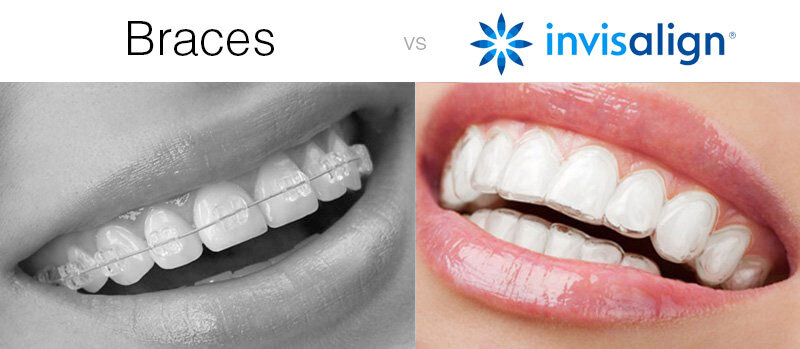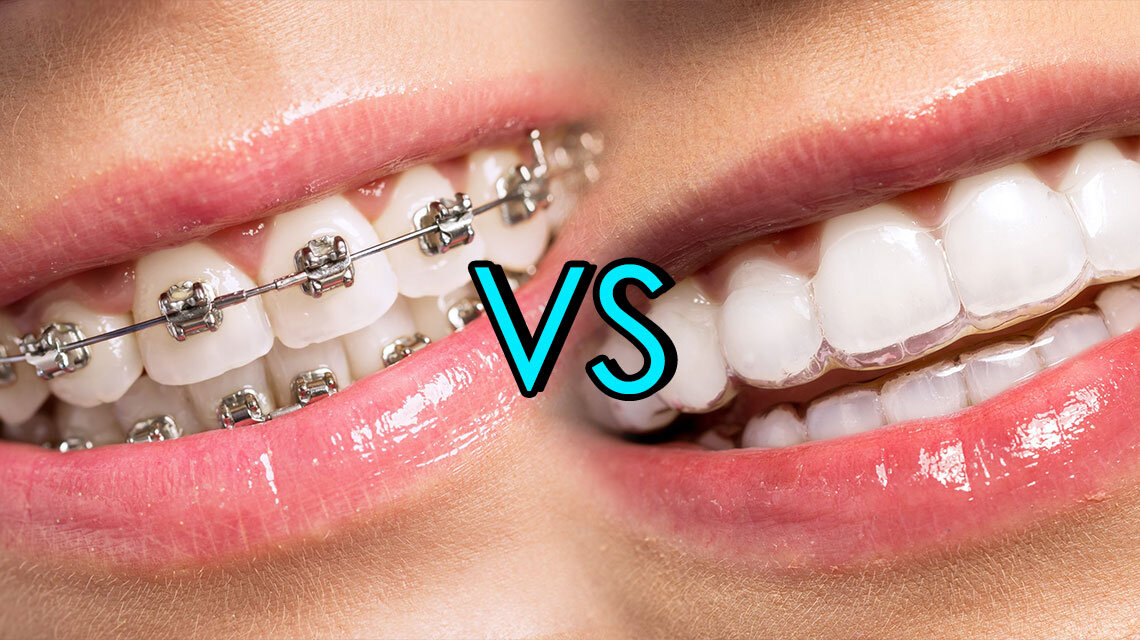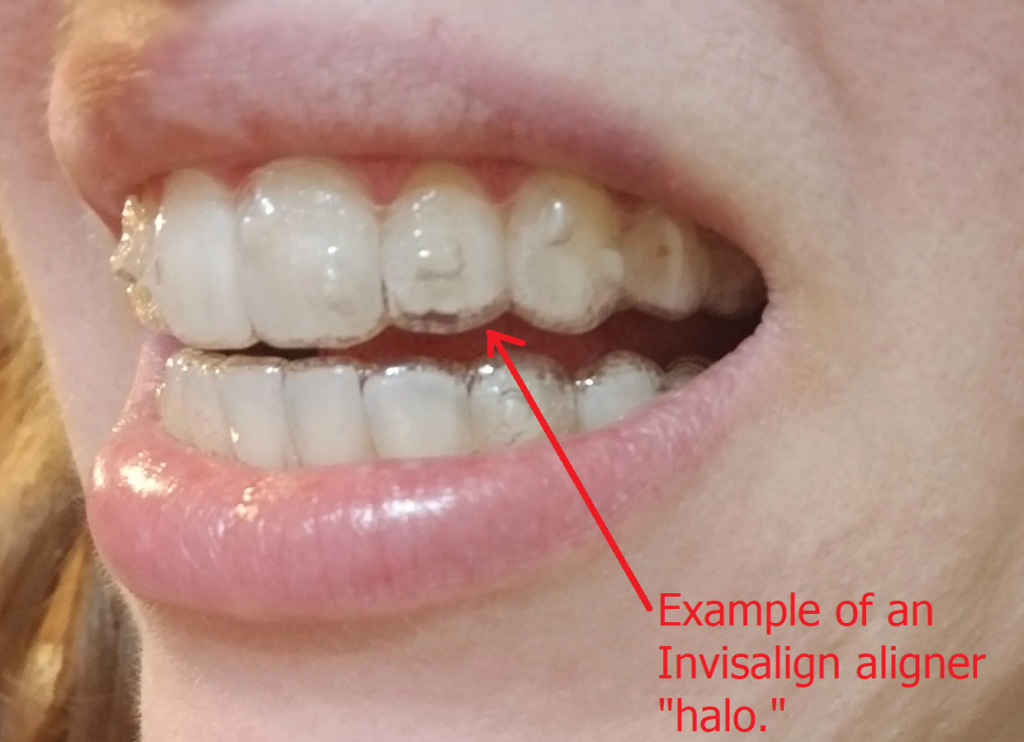Top Factors to Select Invisalign Over Other Orthodontic Treatments
Top Factors to Select Invisalign Over Other Orthodontic Treatments
Blog Article
Invisalign vs. Conventional Dental braces: Which Choice Is Right for You?
When considering orthodontic therapy, the selection in between Invisalign and traditional dental braces offers numerous crucial factors that merit mindful examination. Invisalign provides a very discreet alternative with detachable aligners, while conventional dental braces give an extra noticeable yet efficient option for extreme misalignment.
Introduction of Treatment Options

In comparison, conventional braces consist of steel braces and wires that are adhered to the teeth. This approach uses continuous stress in time to achieve placement. While effective for complicated orthodontic problems, conventional braces require routine brows through for modifications and can position challenges in maintaining oral hygiene due to the difficulty of cleaning around cords and brackets.
Both options have their values, and the selection usually depends upon certain dental conditions, lifestyle preferences, and patient conformity. Eventually, speaking with an orthodontic specialist is important for identifying one of the most appropriate treatment plan customized to private demands. Recognizing the subtleties of each option can considerably affect the overall success of orthodontic treatment.
Aesthetic Considerations
A significant variable affecting the option in between Invisalign and conventional braces is the aesthetic allure each therapy supplies. Invisalign aligners are crafted from clear plastic, making them virtually unnoticeable when worn. This discreet appearance is especially attracting adults and young adults who might feel awkward regarding their orthodontic treatment. The capacity to maintain a natural smile throughout the placement process can substantially enhance the client's confidence in social and specialist settings.
On the other hand, typical braces are composed of metal braces and wires, which can be more noticeable. While innovations in orthodontic technology have resulted in the advancement of smaller sized braces and tinted elastics, conventional dental braces still keep a more obvious profile. For some people, the visibility of braces may discourage them from seeking necessary treatment.
Eventually, the choice between Invisalign and typical braces might hinge on individual choices regarding appearances. Individuals who focus on discretion often favor Invisalign, while those who are less worried regarding exposure may select conventional dental braces. Understanding the aesthetic implications of each alternative is crucial for making an informed decision that lines up with one's lifestyle and choices.
Comfort and Convenience

In regards to benefit, Invisalign aligners are removable, enabling clients to appreciate their favored foods without restriction and preserve optimal oral hygiene. Cleaning and flossing are streamlined, as the aligners can be taken out throughout these regimens, whereas traditional dental braces require mindful maneuvering around cables and brackets.
Additionally, Invisalign's modern system permits less orthodontic gos to. Clients generally get multiple sets of aligners simultaneously, which can enhance the treatment procedure and minimize time invested in the orthodontist's chair. On the other hand, typical braces necessitate regular modifications, making them much less practical for those with hectic schedules. Invisalign. In general, the convenience and benefit of Invisalign make it an attractive click this option for numerous people seeking orthodontic treatment.
Treatment Period and Efficiency
While both Invisalign and standard dental braces work in dealing with dental misalignments, the period of treatment can vary considerably between the two alternatives. Commonly, Invisalign therapy can take anywhere from 12 to 18 months, depending upon the complexity of the instance. The clear aligners work by progressively shifting teeth right into their wanted positions, and regular follow-ups with an orthodontist aid make sure development continues to be on track.
In contrast, conventional braces commonly call for a longer commitment, normally varying from 18 months to 3 years. This is due to their fixed nature and making use of brackets and cords, which can be a lot more effective for severe imbalances and complex cases (Invisalign). The treatment effectiveness of traditional dental braces is well-documented, as they permit exact adjustments and higher control over tooth motion
Inevitably, the selection between Invisalign and conventional braces may depend upon both the anticipated therapy period and the particular dental issues at hand. Consulting with an orthodontist is important, as they can provide tailored recommendations based upon specific requirements, ensuring the chosen method lines up with preferred results and durations.
Cost Comparison and Insurance Coverage Options
Price plays a fantastic read a significant duty in the decision-making process for individuals considering orthodontic therapy, whether selecting Invisalign or typical dental braces. On average, the price of Invisalign arrays from $3,000 to $8,000, while standard braces generally set you back in between $2,000 and $6,000. Elements influencing these expenses consist of the intricacy of the situation, the period of treatment, and geographical location.
Insurance policy coverage can considerably affect out-of-pocket costs. Numerous dental insurance coverage strategies supply partial coverage for orthodontic treatments, yet the specifics can vary widely. It is critical for individuals to assess their insurance coverage to identify the degree of protection for either choice. Typically, typical dental braces might be much more often covered by insurance plans compared to Invisalign, which some insurance providers classify as an aesthetic treatment.
Furthermore, numerous orthodontic methods provide flexible settlement strategies, making both treatment alternatives a lot more obtainable. Individuals should ask about potential financing choices and price cuts for upfront settlements. Reviewing the total price, consisting of insurance advantages and settlement plans, is necessary for making an educated decision that lines up with both aesthetic choices and budget read the article plan considerations.

Verdict
In summary, the selection between Invisalign and standard braces rests on numerous factors, consisting of visual preferences, convenience, treatment duration, and expense. Invisalign uses a discreet, removable option that helps with oral hygiene and dietary flexibility, while typical dental braces may be better for complicated dental issues and typically come at a reduced price factor. Ultimately, consultation with an orthodontist is vital to examine private situations and figure out the most suitable therapy option for achieving ideal dental positioning.
When considering orthodontic treatment, the selection in between Invisalign and standard dental braces presents numerous essential aspects that merit cautious evaluation.Comparing Invisalign and traditional braces exposes distinctive treatment choices for orthodontic improvement.While both Invisalign and traditional braces are reliable in remedying dental imbalances, the duration of treatment can vary considerably between the 2 choices.Expense plays a considerable duty in the decision-making procedure for individuals considering orthodontic treatment, whether opting for Invisalign or typical dental braces.In recap, the option between Invisalign and typical dental braces pivots on multiple variables, consisting of visual preferences, convenience, treatment period, and price.
Report this page